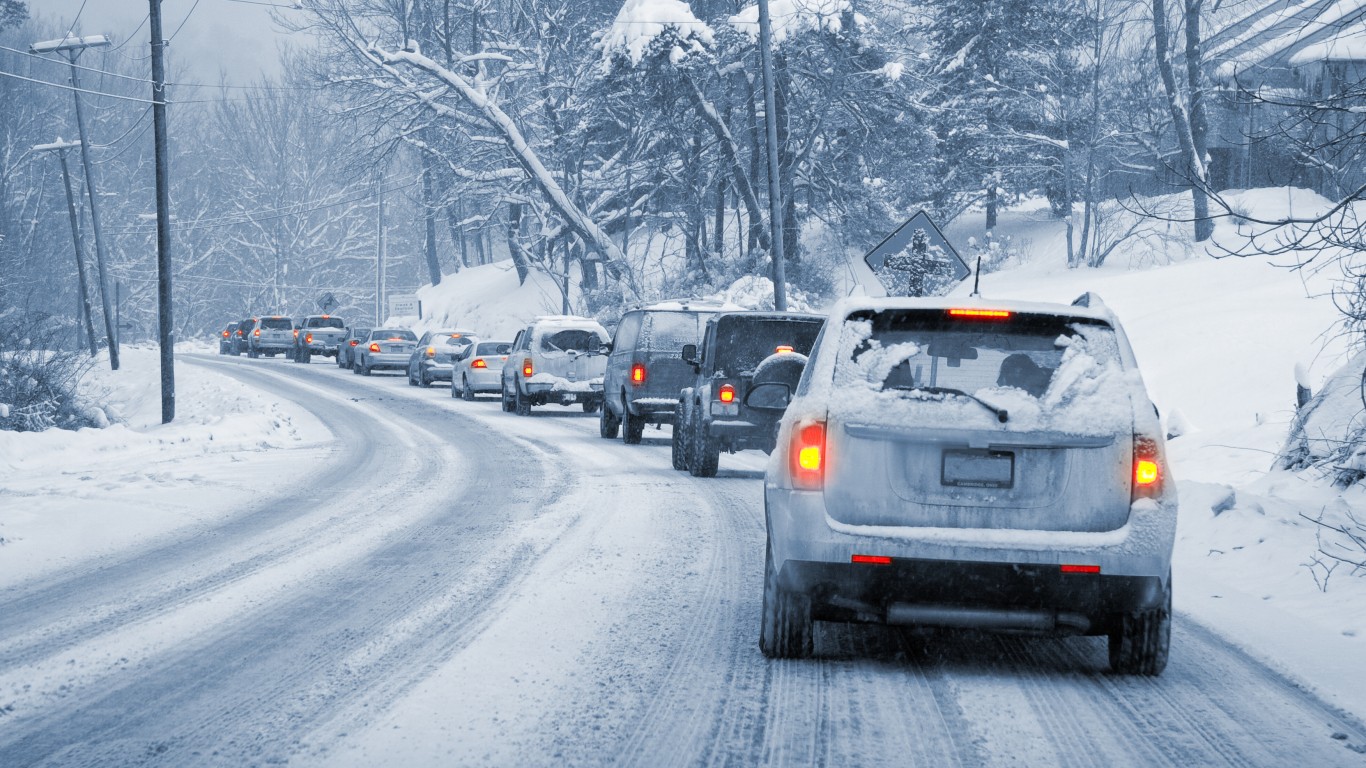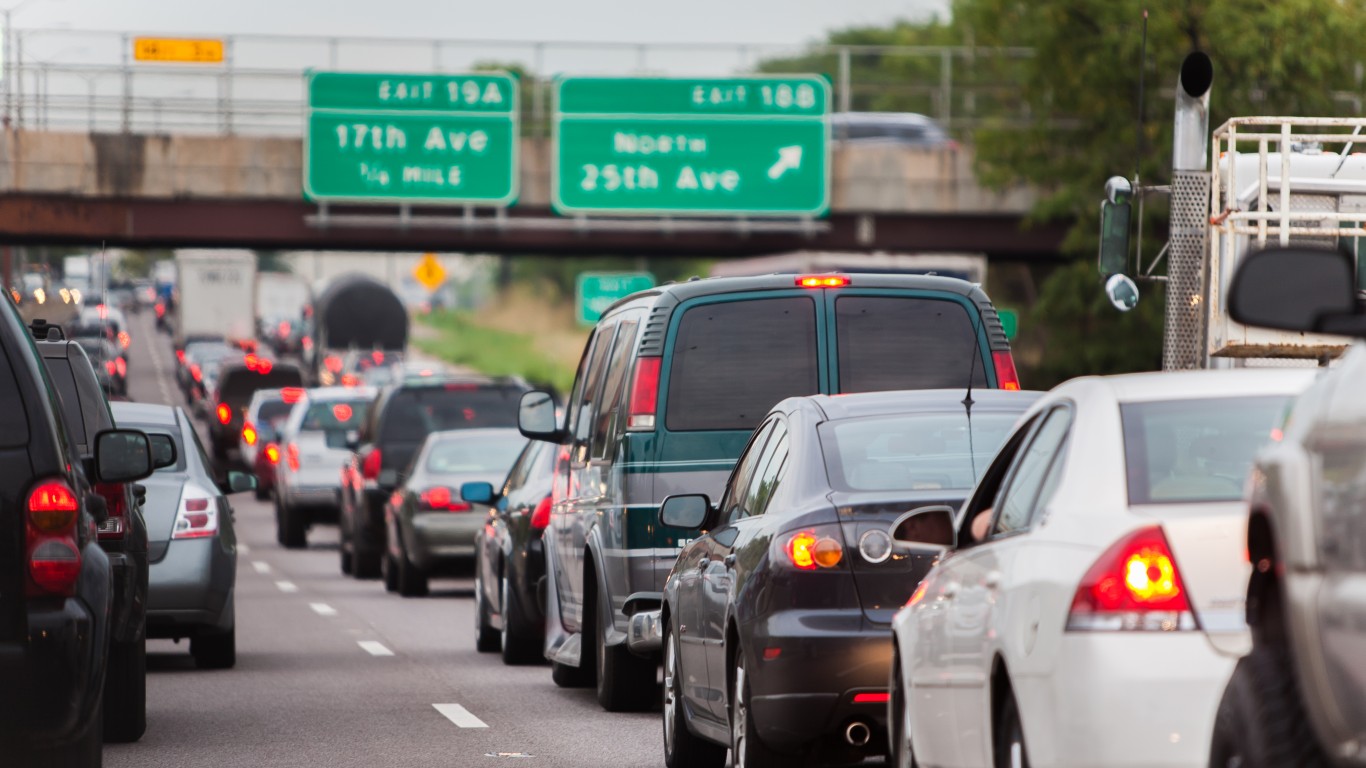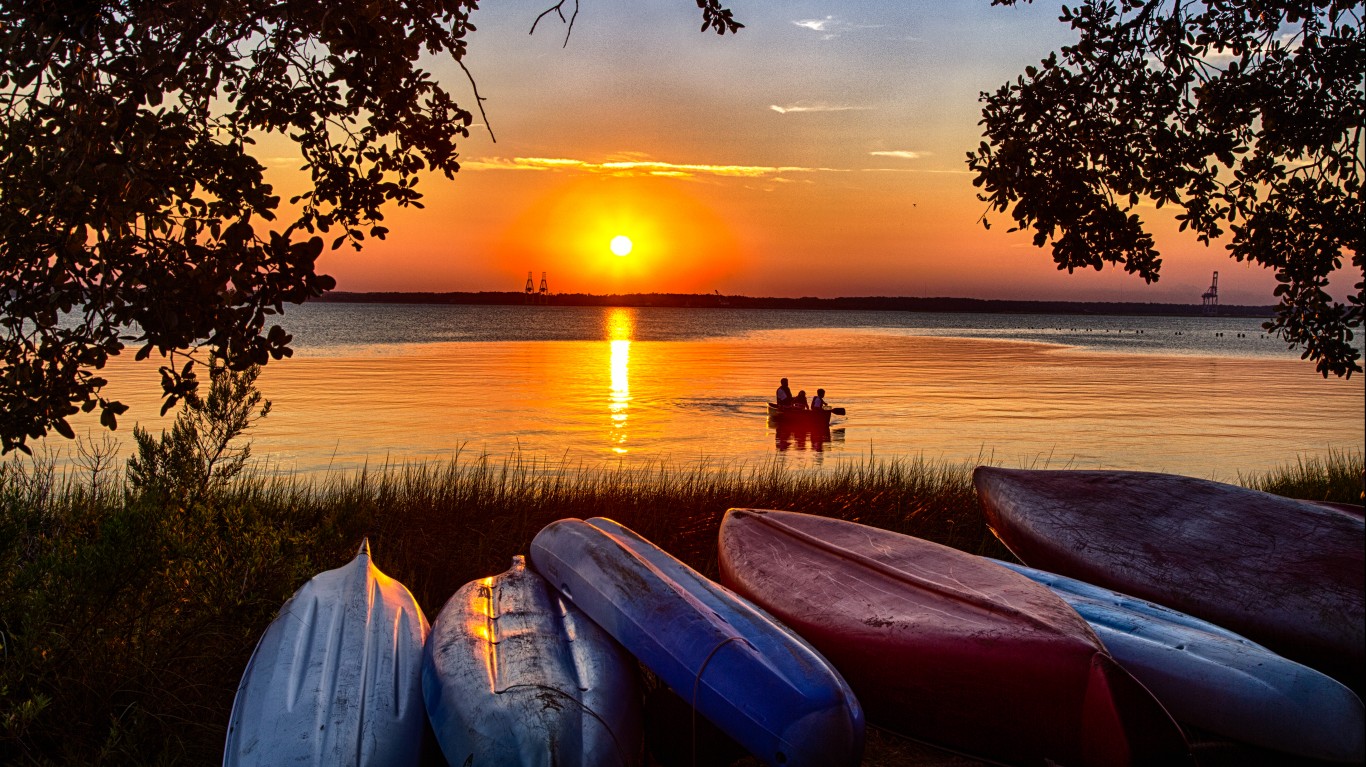
Most recreational activities in 2020 consisted of outdoor activities in large spaces due to COVID-19 travel and social distancing restrictions. Millions of people ventured out of the city and into national parks and recreation areas that span thousands of acres and where people don’t have to worry about being too close to each other.
National recreation areas are lands near large reservoirs. They are usually protected areas that offer visitors a variety of outdoor recreational activities, both water and land based. There are dozens of protected areas in the U.S. that are designated as national recreation areas, and, as of 2020, the National Park Service managed a total of 18 such areas.
To identify the most popular national recreational areas in 2020, 24/7 Tempo reviewed last year’s recreational visits published in the NPS’ annual visitation report. The NPS aggregates visitation data for various government land designations and visitation purposes.
The NPS takes care of more than 85 million acres in all 50 states, the District of Columbia, and U.S. territories. Though NPS locations are generally referred to as parks, there are several name designations. Of the 18 national recreation areas the NPS manages, three are in California, three are in Washington, and five cross borders of two states.
Exploring the wilderness, hiking through mountains, and sleeping under the stars are just some of the nature experiences these parks have to offer, often free of charge. And these are the national parks that had the most visitors in 2020.
Click here to see the most popular recreation areas in the U.S.
To identify the most popular national recreational areas in 2020, 24/7 Tempo reviewed last year’s recreational visits published in the National Park Service’s annual visitation report. The NPS aggregates visitation data for various government land designations and visitation purposes. We considered only National Recreation Areas in our analysis. There are a total of 18 national recreation areas administered by the National Park Service.

18. Lake Chelan, Washington
> Recreation visits in 2020: 30,598
> Share of visits in all national recreation areas in 2020: 0.06%
Fjord-like Lake Chelan is one of the deepest lakes in the U.S. at a depth of 1,500 feet. The recreation area, which boasts nearly 62,000 acres, is located in Cascades Range. Some of the most popular activities are boating, fishing, and lakeshore camping.
[in-text-ad]
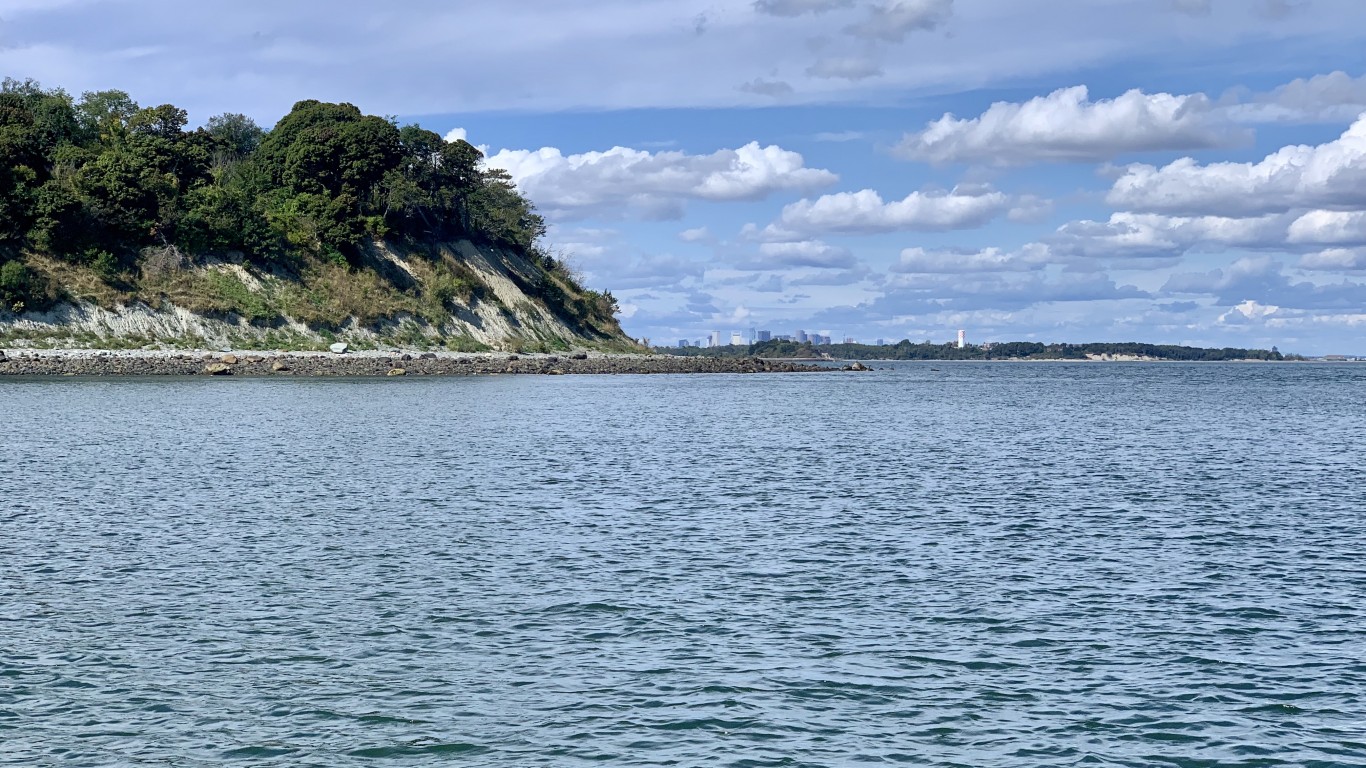
17. Boston Harbor Islands, Massachusetts
> Recreation visits in 2020: 71,991
> Share of visits in all national recreation areas in 2020: 0.15%
The recreation area, which consists of 34 islands and peninsulas, is located a short distance from Boston’s city center. Boston Harbor Islands are known for their historical landmarks, including a Civil War-era fort and several lighthouses.
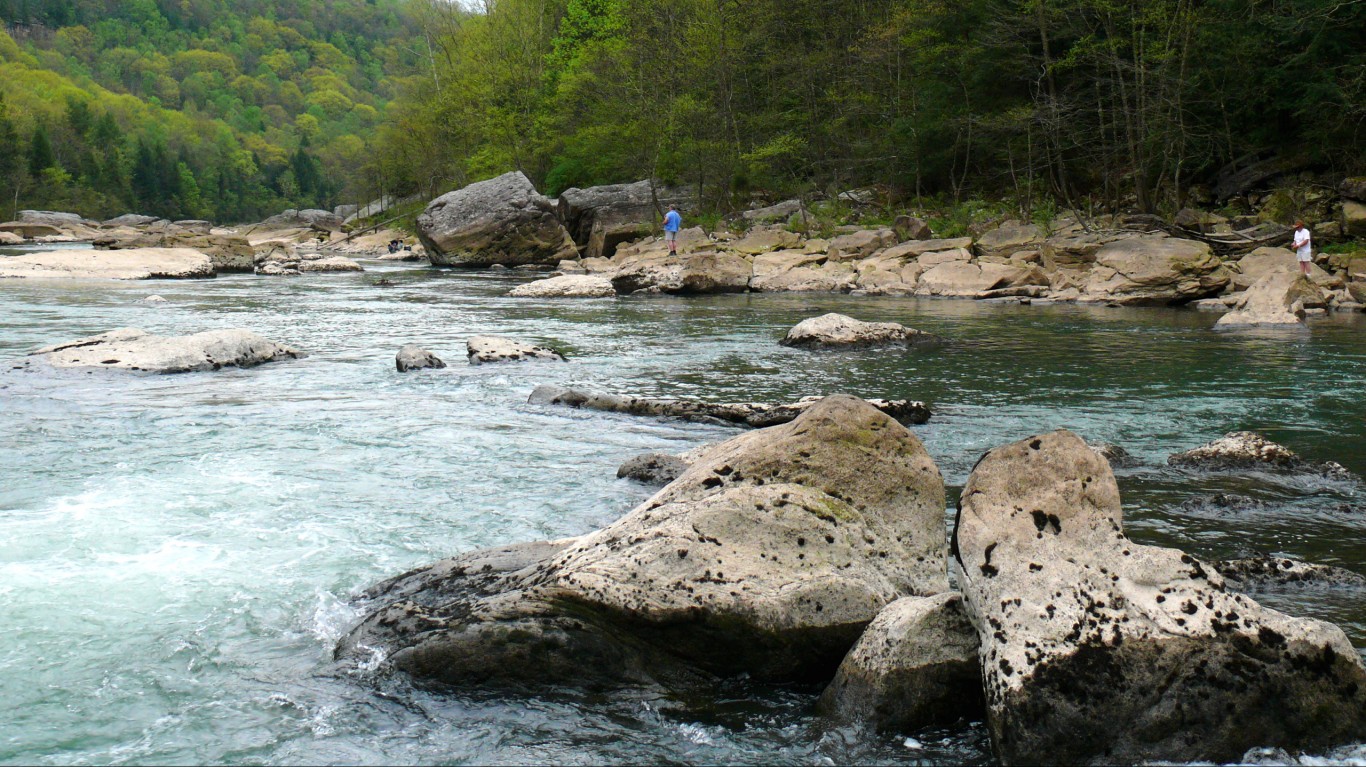
16. Gauley River, West Virginia
> Recreation visits in 2020: 109,378
> Share of visits in all national recreation areas in 2020: 0.23%
The Gauley River National Recreation Area is located near Summersville, West Virginia. The area includes a 25-mile portion of the free-flowing Gauley River and the 6 miles segment of the Meadow River. The recreation area is popular for white water rafting.
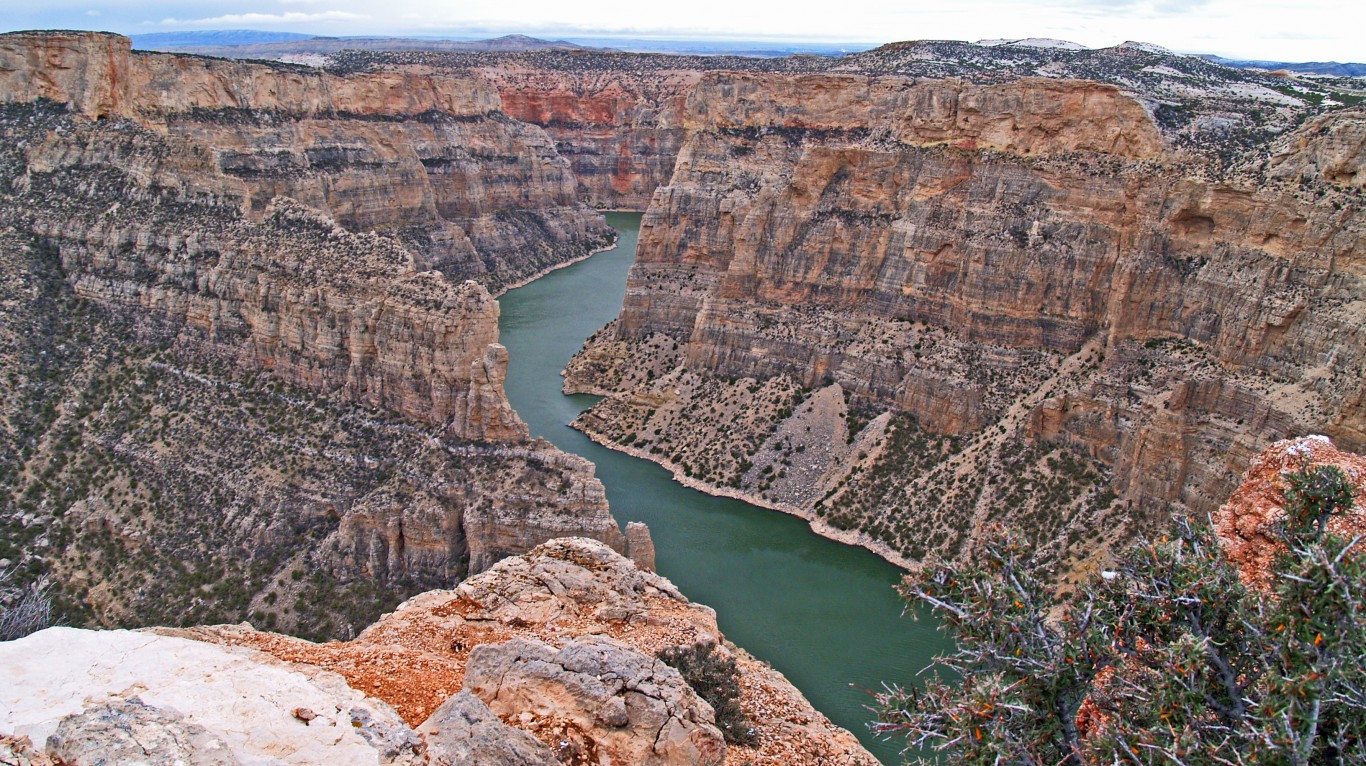
15. Bighorn Canyon, Wyoming and Montana
> Recreation visits in 2020: 212,295
> Share of visits in all national recreation areas in 2020: 0.44%
The Bighorn Canyon recreation area, on the border between Wyoming and Montana, consists of more than 120,000 acres of outdoor playground and natural habitat. With 27 miles of trails, hiking is a popular activity in the park. The Bighorn River, which flows through the recreation area, is the most fished river in Montana.
[in-text-ad-2]

14. Santa Monica Mountains, California
> Recreation visits in 2020: 733,576
> Share of visits in all national recreation areas in 2020: 1.52%
The Santa Monica Mountains National Recreation Area is often referred to as Los Angeles’ national park due to its proximity to the city. The area contains many small parks, open space reserves, and 500 miles of hiking trails. The 67-mile Backbone Trail, which takes about a week to complete, is one of the most famous trails in the state.

13. Whiskeytown, California
> Recreation visits in 2020: 805,295
> Share of visits in all national recreation areas in 2020: 1.67%
Whiskeytown is a recreation area consisting of about 42,000 acres featuring rugged mountains and crystal clear lake water. Camping is one of the most popular activities in the park, which has different types of camping sites, ranging from primitive to RV.
[in-text-ad]
12. Ross Lake, Washington
> Recreation visits in 2020: 920,526
> Share of visits in all national recreation areas in 2020: 1.91%
The Ross Lake area is the most accessible of the North Cascades, which are home to one of the most diverse ecosystems in the world. The recreation area is mostly for hiking and camping. Surrounded by mountains, most of the outdoor recreation opportunities are along the Skagit River.
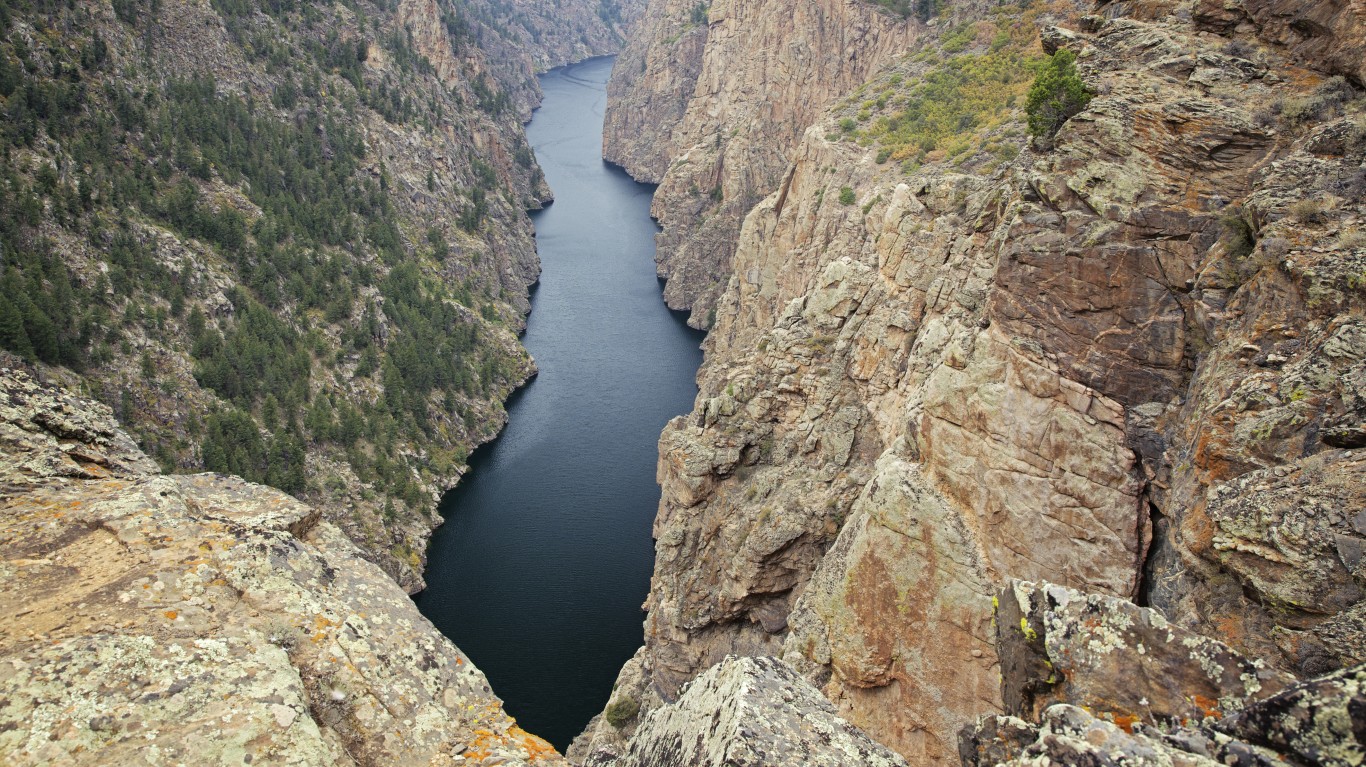
11. Curecanti, Colorado
> Recreation visits in 2020: 921,584
> Share of visits in all national recreation areas in 2020: 1.91%
The Curecanti recreation area contains three reservoirs along the Gunnison River, making Curecanti the go-to place for deep-water fishing in the Rocky Mountains. Camping is also a popular activity. The area contains at least 10 developed campgrounds with multiple camping sites each.
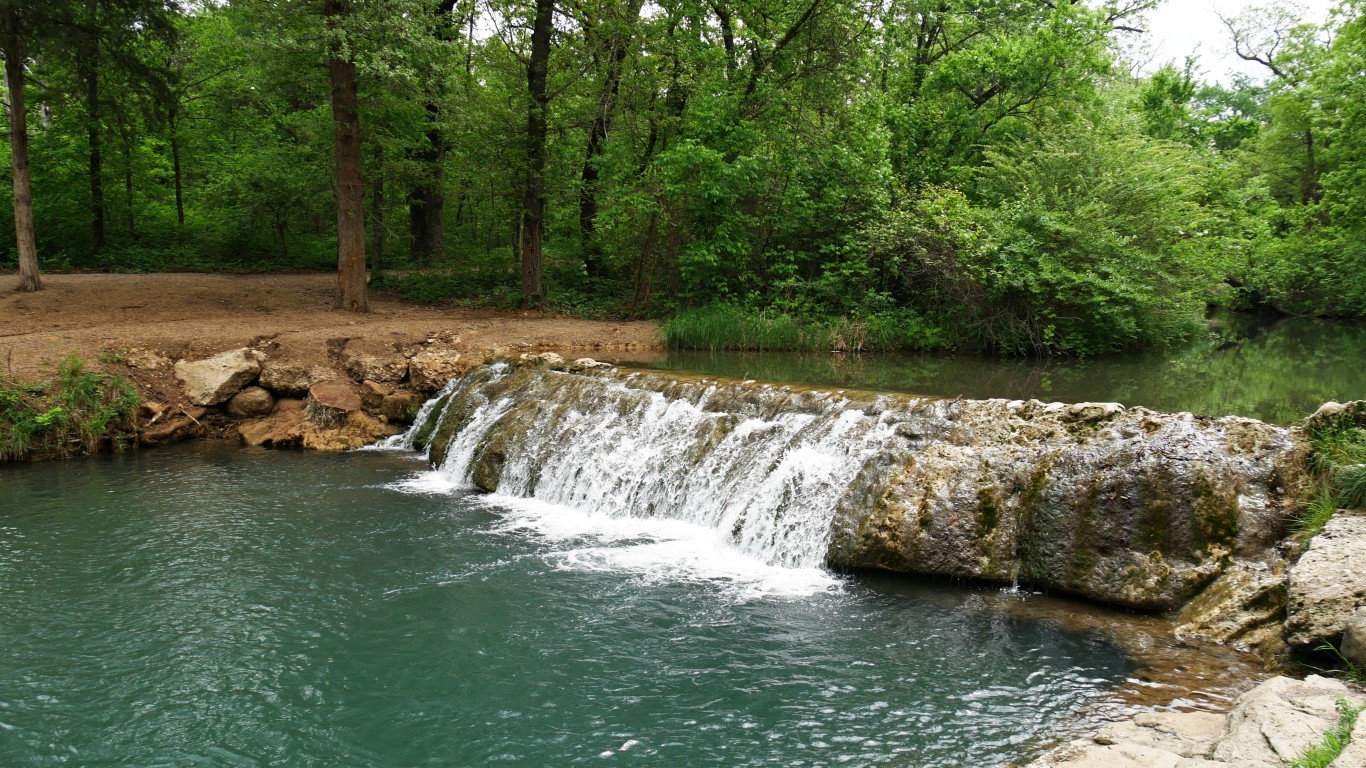
10. Chickasaw, Oklahoma
> Recreation visits in 2020: 1,348,122
> Share of visits in all national recreation areas in 2020: 2.80%
Chickasaw recreation area, which is one of only three parks in Oklahoma the NPS regulates, is in the foothills of the Arbuckle Mountains in the southern part of the state. Fishing is very popular in the park. The Platt National Park, which was originally called the Sulphur Springs Reservation, is now part of the Chickasaw recreation area.
[in-text-ad-2]

9. Amistad, Texas
> Recreation visits in 2020: 1,424,139
> Share of visits in all national recreation areas in 2020: 2.95%
The Amistad National Recreation Area includes the U.S. area of the Amistad Reservoir, also known as Lake Amistad, along the border of the U.S. and Mexico. The recreation area is a popular destination for water-based activities as well as camping and hiking. Prehistoric Native American paintings can be found throughout the area.
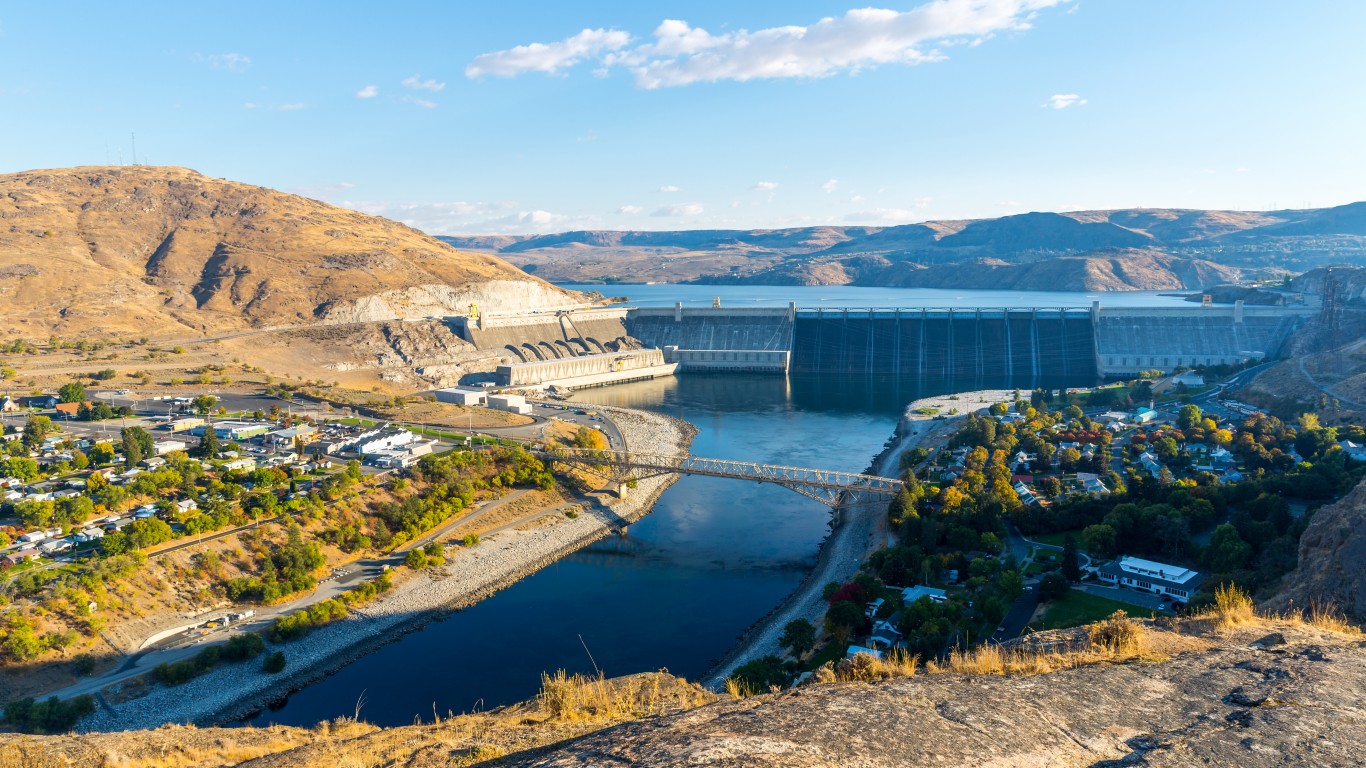
8. Lake Roosevelt, Washington
> Recreation visits in 2020: 1,519,403
> Share of visits in all national recreation areas in 2020: 3.15%
The Lake Roosevelt recreation area includes the 130-mile long Franklin D. Roosevelt Lake in the eastern part of Washington state. The vast reservoir, which is the largest recreation destination in the park, is popular with boaters. Hiking and camping are also popular outdoor activities.
[in-text-ad]
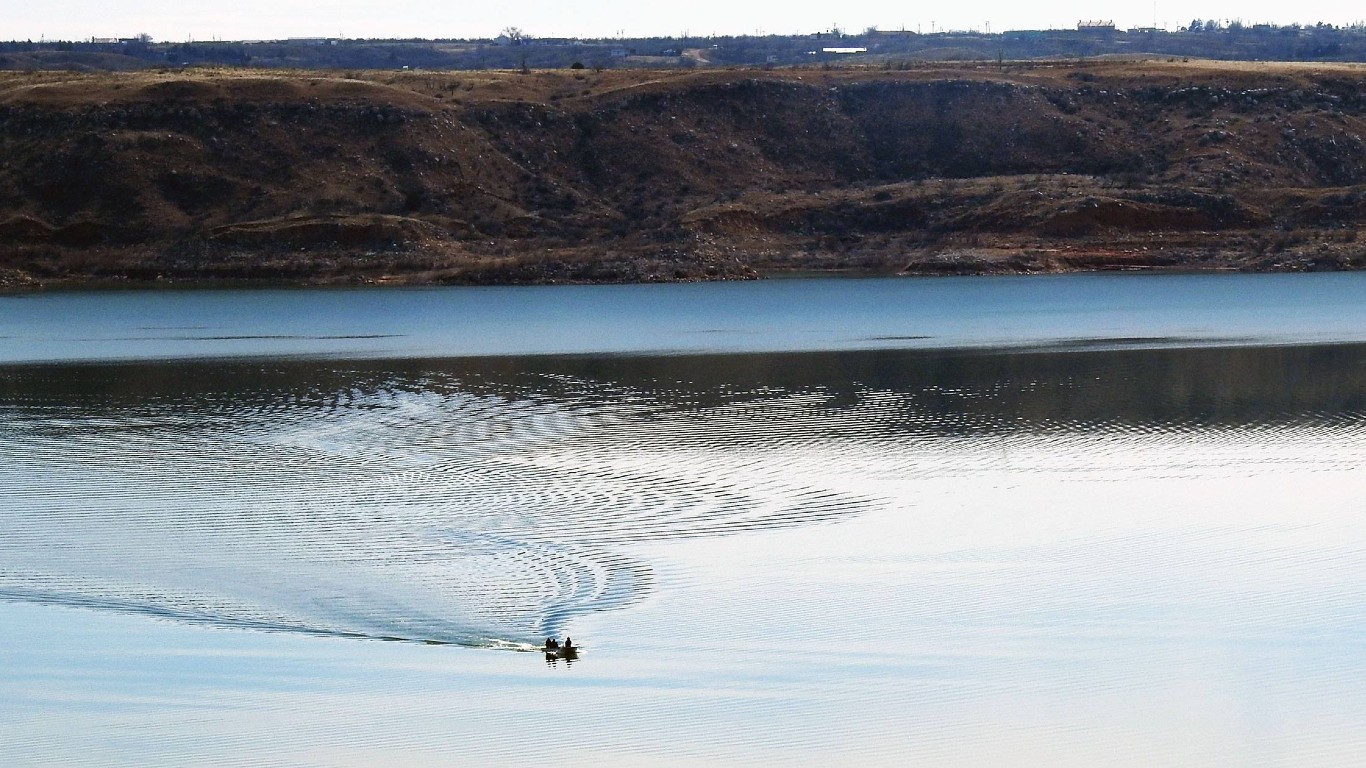
7. Lake Meredith, Texas
> Recreation visits in 2020: 1,612,784
> Share of visits in all national recreation areas in 2020: 3.34%
The Lake Meredith recreation area is often described as the hidden oasis in the dry plains of the Texas Panhandle. The area is best known for its wildlife and migratory birds. Boating — whether by private boat or a rental — is among the most popular recreational activities in the park. Many of the campgrounds are near water.
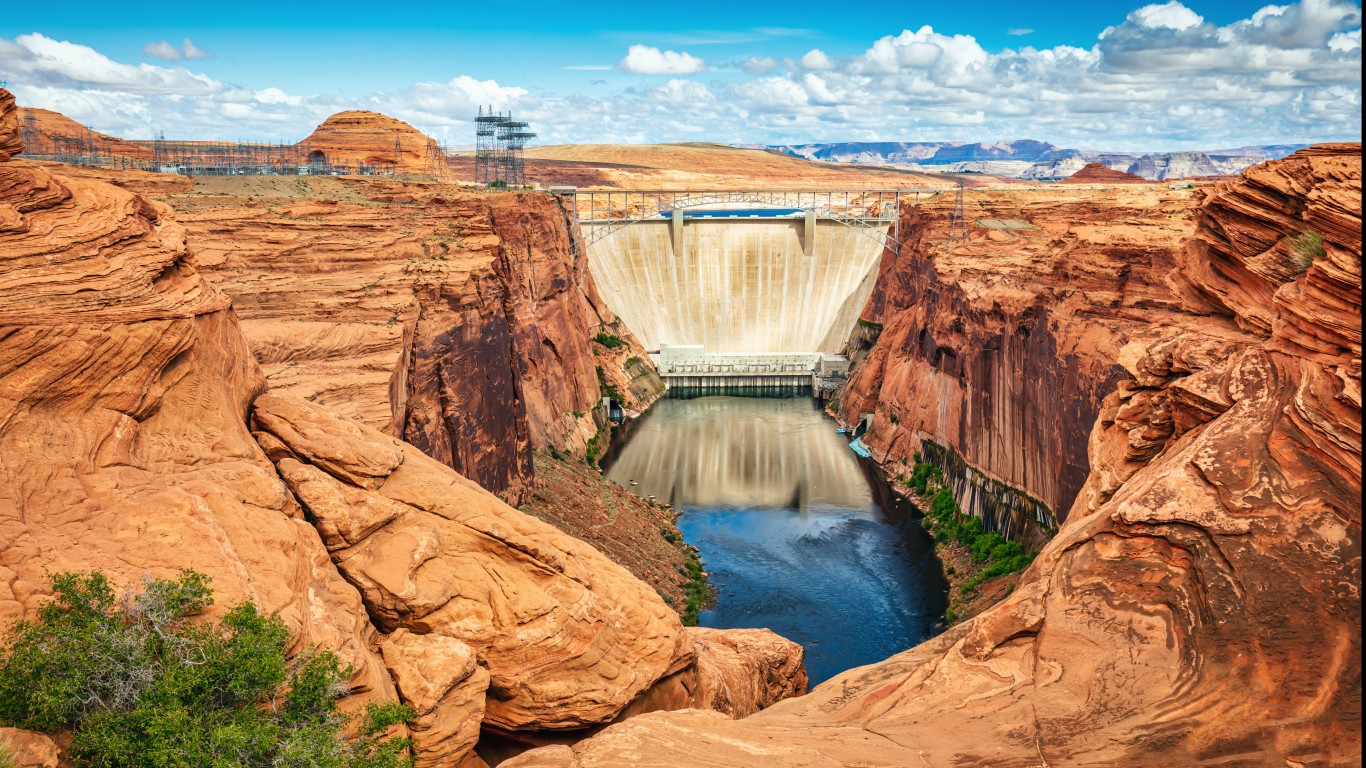
6. Glen Canyon, Utah and Arizona
> Recreation visits in 2020: 2,553,392
> Share of visits in all national recreation areas in 2020: 5.30%
The Glen Canyon recreation area spans over more than 1.2 million acres, stretching from Lees Ferry in Arizona to the Orange Cliffs in Utah. Lake Powell, the second largest human-made lake in the country, is part of the Glen Canyon, making the recreation area one of the most popular boating destinations in the U.S.
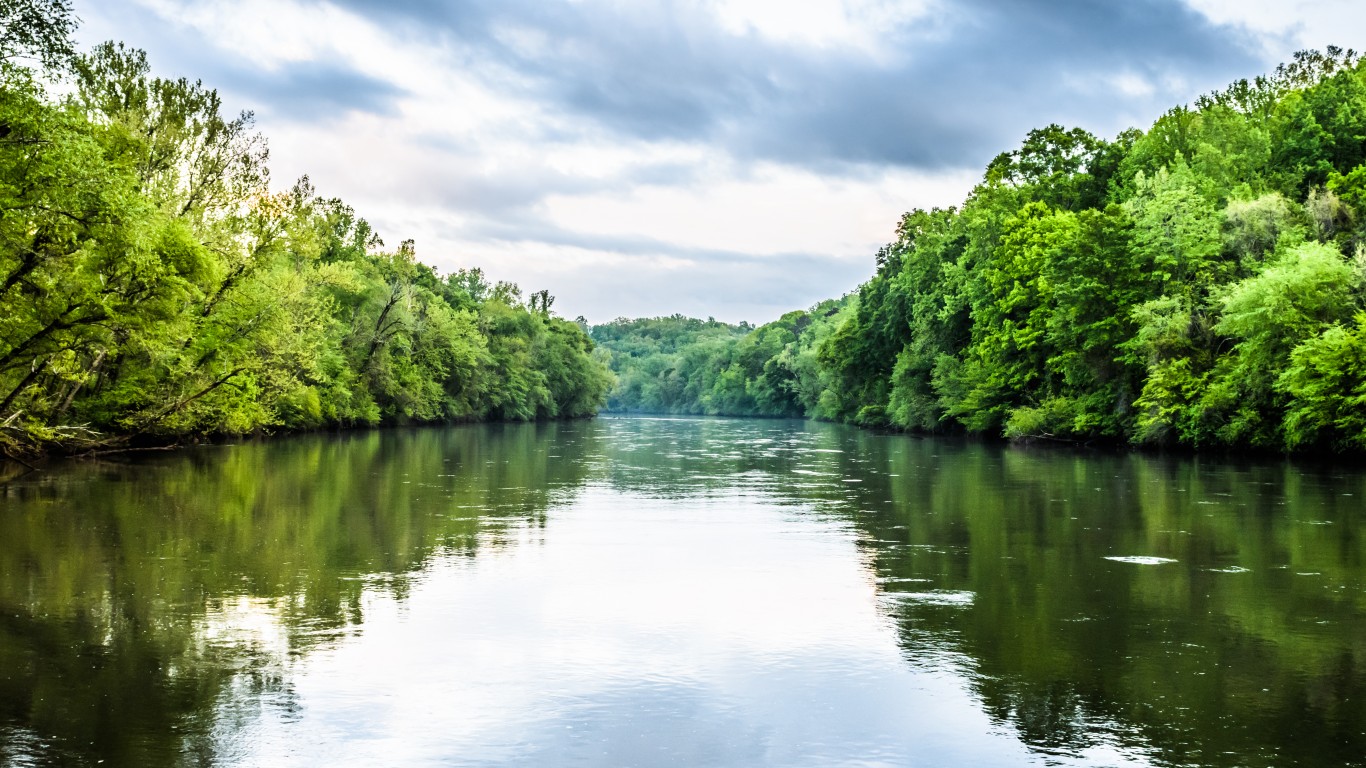
5. Chattahoochee River, Georgia
> Recreation visits in 2020: 3,066,877
> Share of visits in all national recreation areas in 2020: 6.36%
The Chattahoochee River recreation area protects several sites between Atlanta and Lake Sidney Lanier along the 48-mile Chattahoochee River. Rafting and fishing are popular activities in the recreation area. More than 20 species of fish live in the river.
[in-text-ad-2]

4. Delaware Water Gap, New Jersey and Pennsylvania
> Recreation visits in 2020: 4,068,529
> Share of visits in all national recreation areas in 2020: 8.44%
The Delaware Water Gap recreation area is part of a stretch of the Delaware River along the border between New Jersey and Pennsylvania. The 1,000-foot deep Water Gap is a major attraction for visitors. Rafting, fishing, and hiking are also popular outdoor activities in the recreation area, which consists of more than 70,000 acres.
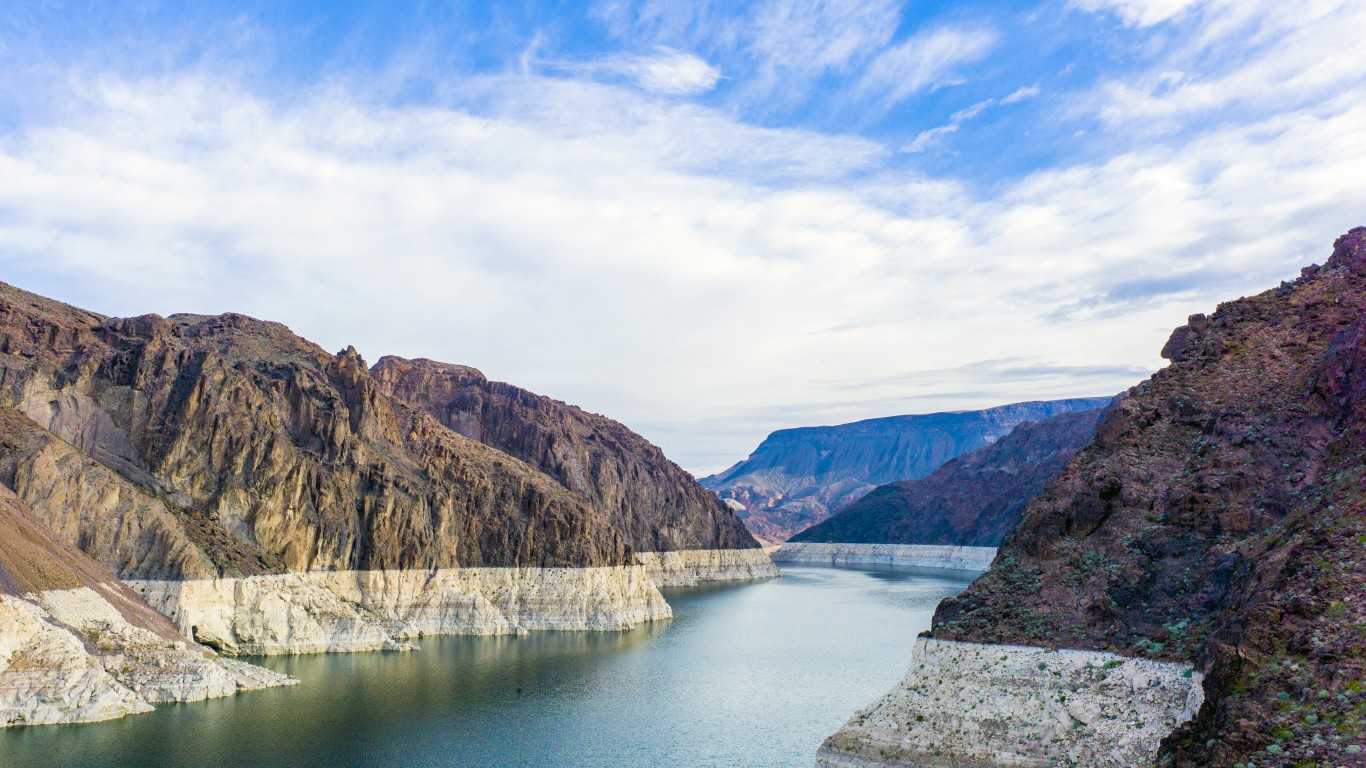
3. Lake Mead, Nevada and Arizona
> Recreation visits in 2020: 8,016,510
> Share of visits in all national recreation areas in 2020: 16.62%
The Lake Mead recreation areas, which spans 1.5 million acres of mountains, canyons, lakes, and valleys, is in southern Nevada and northwestern Arizona, a short drive from Las Vegas. Water-based recreational activities are popular in the area, which has more than 750 miles of shoreline.
[in-text-ad]

2. Gateway, New York and New Jersey
> Recreation visits in 2020: 8,404,728
> Share of visits in all national recreation areas in 2020: 17.43%
The Gateway is a 27,000-acre national recreation area spanning from Breezy Point in New York to Sandy Hook in New Jersey. This is not just a destination for water-based activities though. There are several popular indoor activities, including visiting the Jamaica Bay Wildlife Refuge.
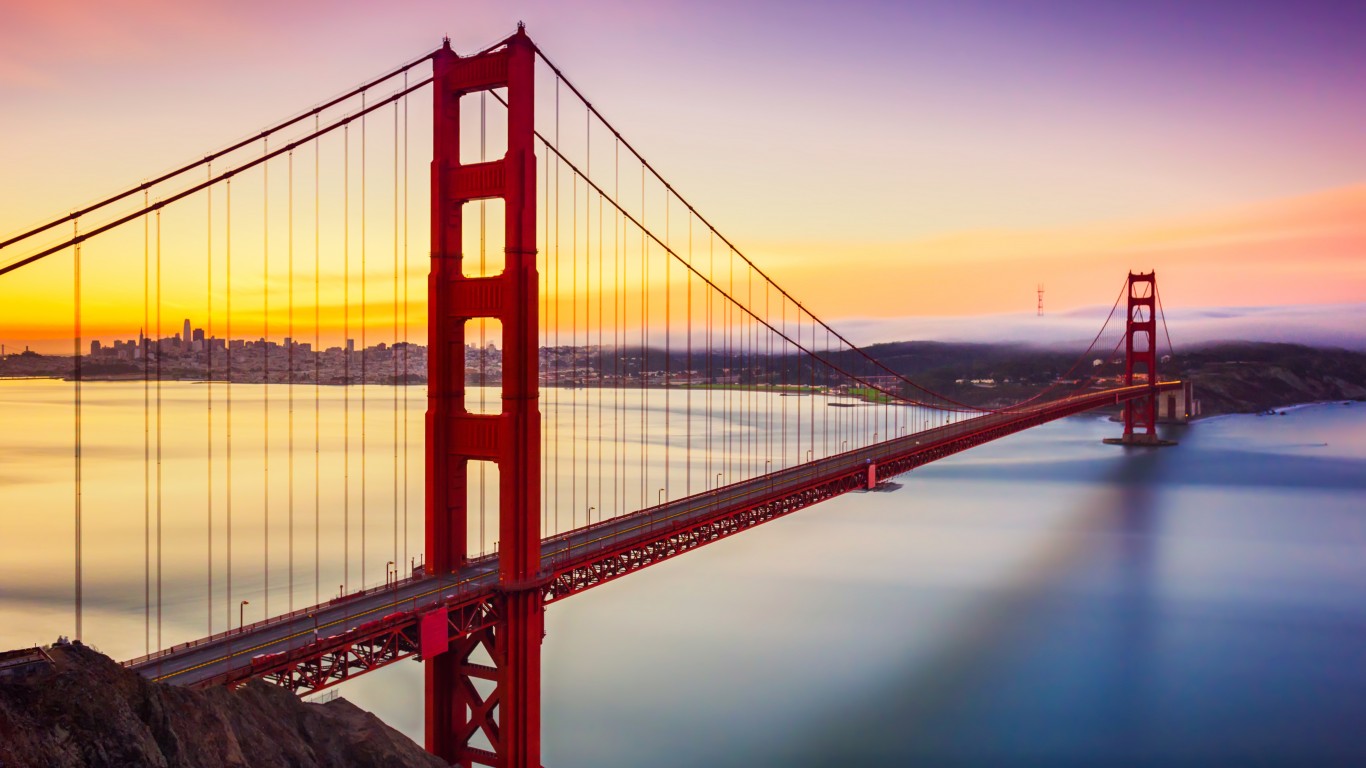
1. Golden Gate, California
> Recreation visits in 2020: 12,400,045
> Share of visits in all national recreation areas in 2020: 25.72%
The Golden Gate Bridge is by far the most recognizable feature of the San Francisco area. And there are plenty of opportunities for outdoor activities in the area around the bridge. In fact, the Golden Gate recreation area is home to 19 ecosystems and more than 2,000 different kinds of plants and animals. Some of the favorite short activities in the park include whale watching and going on history walking tours. Popular activities that take a few hours are hiking to the top of the Montara Mountain, riding a horse to the ocean, and hiking to the Point Bonita Lighthouse.
Get Ready To Retire (Sponsored)
Start by taking a quick retirement quiz from SmartAsset that will match you with up to 3 financial advisors that serve your area and beyond in 5 minutes, or less.
Each advisor has been vetted by SmartAsset and is held to a fiduciary standard to act in your best interests.
Here’s how it works:
1. Answer SmartAsset advisor match quiz
2. Review your pre-screened matches at your leisure. Check out the advisors’ profiles.
3. Speak with advisors at no cost to you. Have an introductory call on the phone or introduction in person and choose whom to work with in the future
Thank you for reading! Have some feedback for us?
Contact the 24/7 Wall St. editorial team.
 24/7 Wall St.
24/7 Wall St.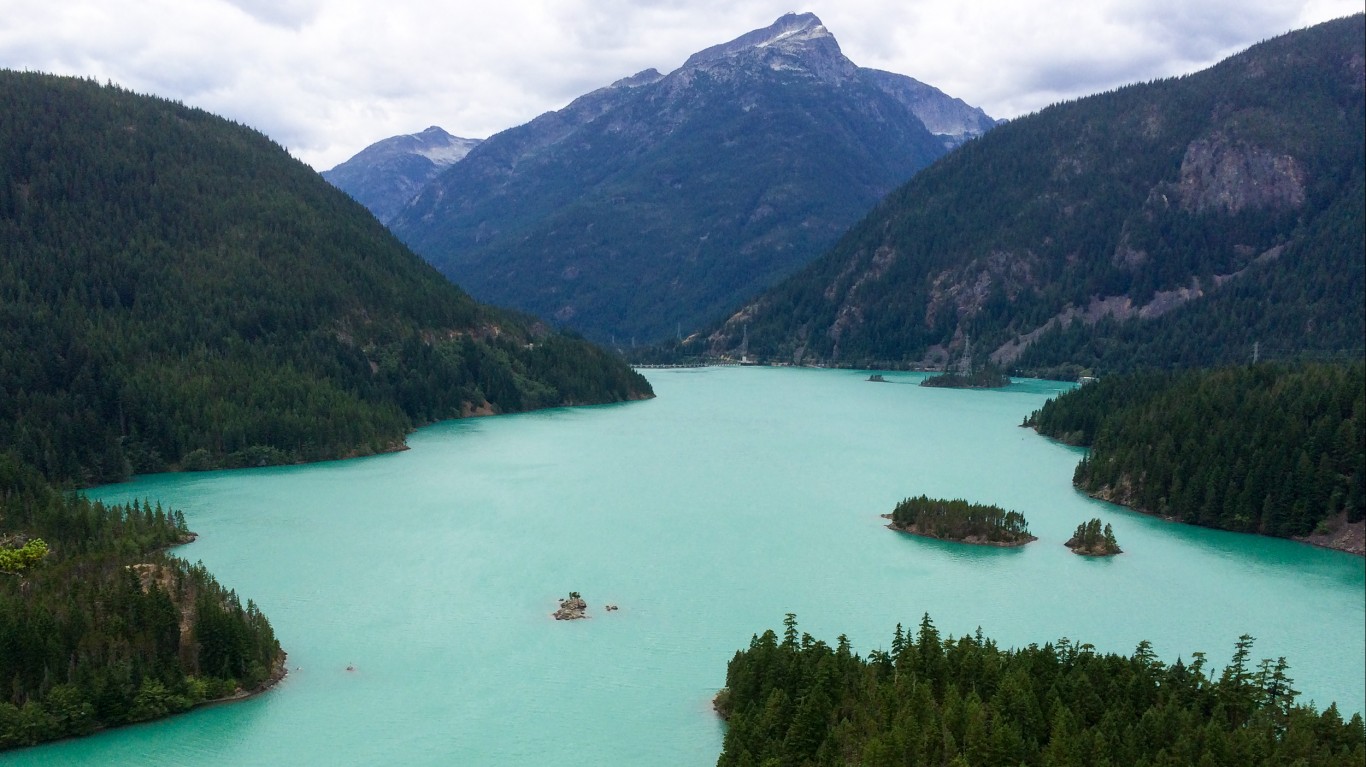
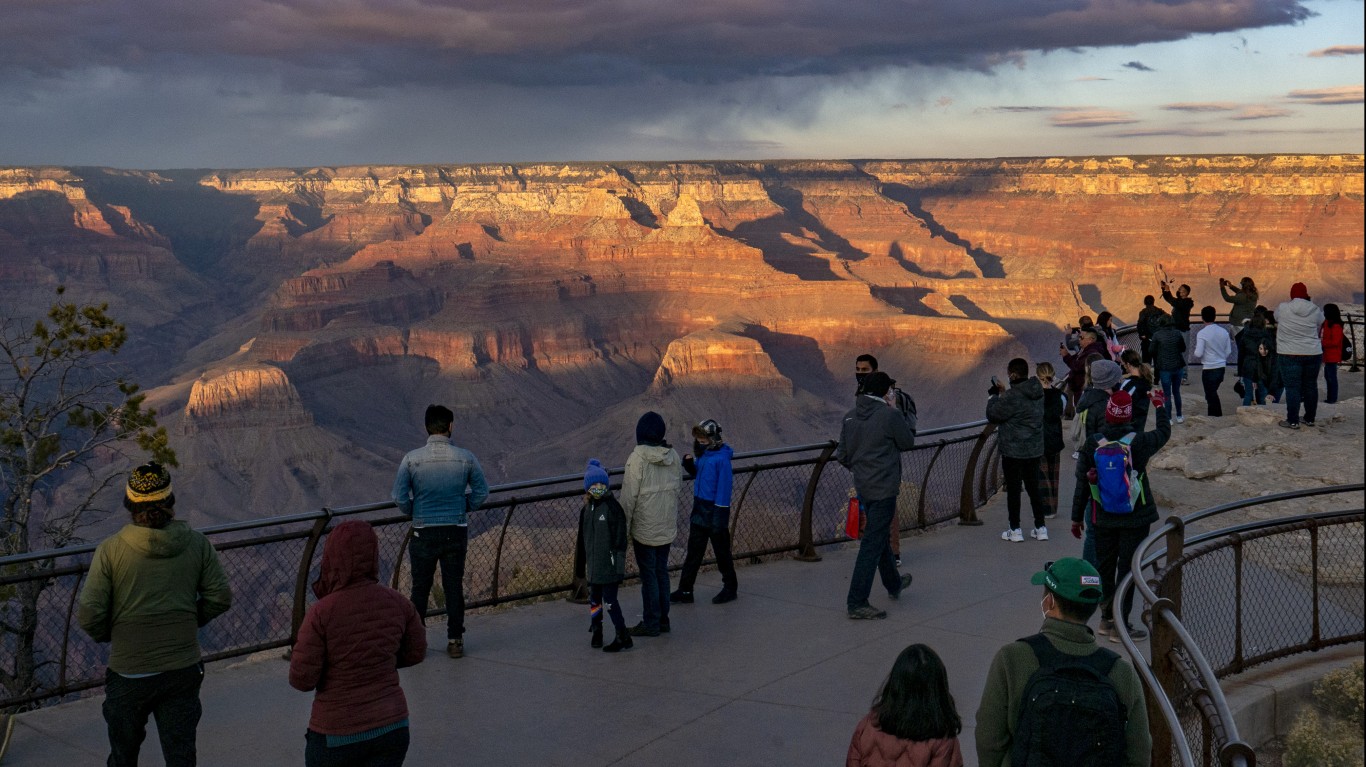 24/7 Wall St.
24/7 Wall St.